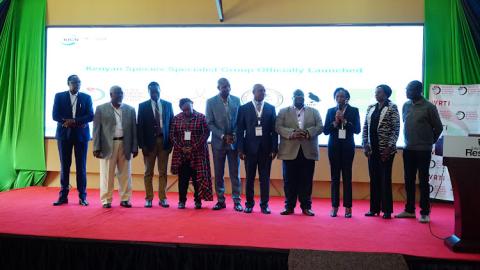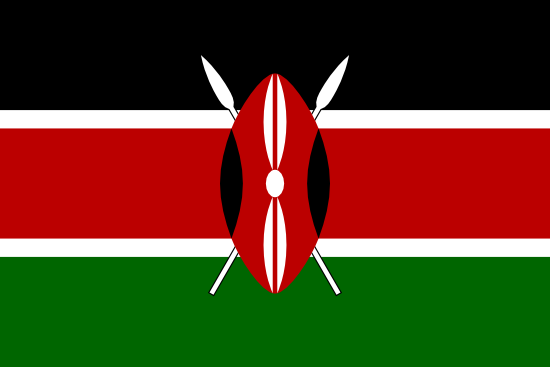Team to assess health of Kenya’s biodiversity unveiled
Group comes at a time when Kenya's wildlife is facing a myriad of challenges
By. GILBERT KOECH
News Reporter ,STAR Newspaper
BIO: Environment/Science journalist
In Summary
•The group will now promote and contribute to the development and implementation of existing species conservation action plans.
•It will also conduct a national red list assessment for priority wildlife and other crucial species.
The government has unveiled a new team to assess the health of Kenya's biodiversity even as threats escalate.
Wildlife PS Silvia Museiya on Wednesday unveiled the International Union for Conservation of Nature (IUCN) Kenyan Species Specialist Group at Lake Naivasha Resort during the ongoing inaugural Wildlife Scientific Conference.
The group composed of officials from the Wildlife Research and Training Institute, Kenya Wildlife Service, National Museums of Kenya will access crucial biodiversity for effective management and conservation planning.
The PS noted that the unveiling of the specialised group comes at a time when Kenya's wildlife is facing a myriad of challenges.
“Despite all the legal, policy and institutional frameworks, we continue to lose our diversity by over 70 per cent since 1977, our forest cover by 7.3 per cent, our water and lakes are drying up. We are saying something is not right,” Museiya said.
The launch of the group comes even as the National Wildlife Strategy 2030 documented evidence showing a 68 per cent loss of wildlife populations in savanna ecosystems between 1977-2016; a 40 per cent decline in freshwater wetland ecosystems.
The strategy also shows a 7.4 per cent loss of forest cover between 1990 and 2014; a nine per cent decline in insect pollinators; a 74 per cent loss of coral reefs by 1999; and a 90 per cent decrease in Mt Kenya snow cap cover due to climate change.
The challenges include habitat loss and degradation; loss of ecosystem connectivity; climate change; human-wildlife conflicts; diseases and loss of genetic viability; poaching for trophies and bush meat.
Others are infrastructural development; and human encroachment into wildlife areas among others. These challenges have resulted in significant declines in wildlife populations across the country.
Museiya said despite many years of conservation efforts in the country and around the world, natural resources were being lost at an alarming rate.
IUCN is a membership Union composed of both government and civil society organisations harnessing the experience, resources and reach of its more than 1,400 member organisations and the input of some 15,000 experts.
It is the global authority on the status of the natural world and the measures needed to safeguard it.
The Specialist group is composed of Kenya Wildlife Service, Wildlife Research and Training Institute, National Museums of Kenya and other partners.
The group will now promote and contribute to the development and implementation of existing species conservation action plans as well as support the development of additional ones.
It will also conduct a national red list assessment for priority wildlife and other crucial species.
They will also promote the integration of species information and conservation action into national and county-level policy processes including contributing to updating schedule 6 of the Wildlife Conservation and Management Act 2013.
The specialist group will help complete the global Red List assessment for endemic freshwater fish, invertebrates, mammals, reptiles, amphibians, plants and selected marine species that are not yet in the list.
The IUNCN’s Red List of Threatened Species has evolved to become the world’s most comprehensive information source on the global extinction risk status of animal, fungus and plant species.
The Red List which was established in 1964 is a powerful tool to inform and catalyse action for biodiversity conservation and policy change, critical to protecting the natural resources needed to survive.
Currently, there are more than 150,300 species on The IUCN Red List, with more than 42,100 species threatened with extinction, including 41% of amphibians, 37% of sharks and rays, 36% of reef-building corals, 34% of conifers, 27% of mammals and 13% of birds.
Museiya said the state is keen to use science and data to make decisions saying they feel there is a disconnect somewhere in efforts to safeguard iconic species.
She said there is a need for an integrated conservation policy that speaks to the management of forests, water fisheries and wildlife from where all the sub-sectors can borrow.
Museiya said a task force on conservation is set to be gazetted this coming Friday to help address some of the challenges facing conservation efforts in the country.
WRTI CEO Dr Patrick Omondi said the Institute has been given seed capital to establish a national wildlife database bringing all the scientific information into one government institution.
“As an Institute, we can analyse the scientific information, produce briefs for policymakers, produce briefs for managers of national parks, managers of national reserves and community conservancies,” Omondi said.
Omondi said they are in the process of procuring physical hardware and will be developing a web-based system with the latest technology.
He said a national wildlife data portal will be up and running at the end of the year.
Omondi said the portal will guide all infrastructure developments.
He said the move will guide where to have overpasses and underpasses for wildlife.

